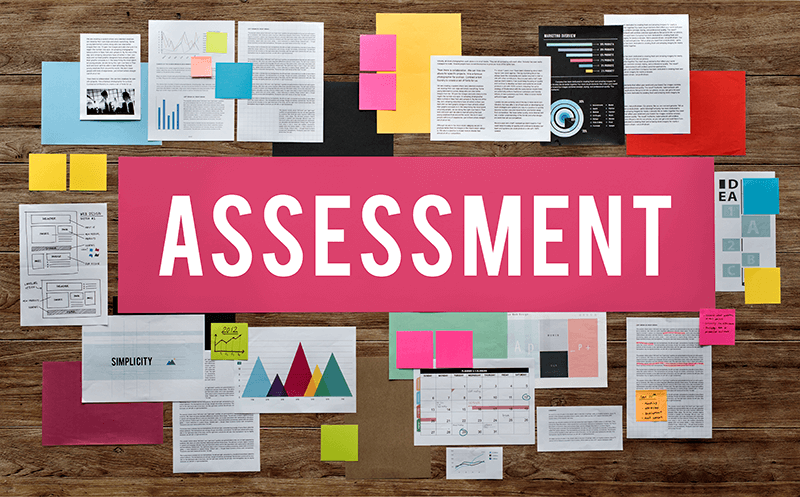What is an ESG Materiality Assessment? Everything You Need to Know
Welcome to our exploration of a critical aspect of modern corporate strategy: the ESG Materiality Assessment. In an era where environmental, social, and governance issues are at the forefront of global business discourse, understanding the essence of an ESG Materiality Assessment is paramount for any forward-thinking organisation. This process goes beyond mere compliance, delving into identifying and prioritising key sustainability issues that hold the most significance for a business and its diverse stakeholders. By integrating these aspects into their core strategies, companies can navigate the complex interplay between societal expectations, environmental stewardship, and governance ethics.
Join us as we delve into the nuances of ESG Materiality Assessments and uncover why they are indispensable tools in the repertoire of responsible and sustainable business practices.
What is an ESG Materiality Assessment?
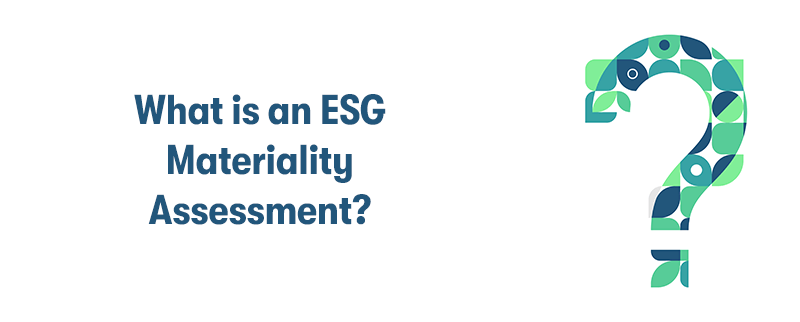
An ESG (Environmental, Social, and Governance) Materiality Assessment is a process used by organisations to identify and prioritise environmental, social, and governance issues that are most significant to their business and stakeholders. This assessment is crucial to an organisation's ESG strategy and reporting. The key components and purposes of an ESG Materiality Assessment are:
Identifying ESG Issues
The first step involves identifying a wide range of ESG issues that could potentially impact the organisation or be important to its stakeholders. This includes environmental concerns like climate change and resource use, social issues such as labour practices and community impact, and governance matters like corporate ethics and transparency.
Engaging Stakeholders
Stakeholder engagement is vital in the materiality assessment process. This involves consulting with various stakeholders, including employees, customers, suppliers, investors, and local communities, to understand their perspectives and priorities regarding ESG issues.
Prioritising Material Issues
After identifying ESG issues and gathering stakeholder input, the next step is prioritising these issues based on their relevance and impact on the organisation and its stakeholders. This involves assessing the significance of each issue to the organisation's business performance and stakeholders' expectations and concerns.
Aligning with Business Strategy
The identified material ESG issues are then aligned with the organisation's overall business strategy. This ensures that the company's approach to managing these issues is integrated with its broader goals and objectives.
Informing Reporting and Decision-Making
The outcomes of the ESG Materiality Assessment are used to inform the organisation's sustainability reporting, allowing it to focus on the most significant issues. It also guides decision-making processes and develops strategies and policies to manage the prioritised ESG issues.
Compliance and Risk Management
The assessment helps in identifying potential risks and regulatory compliance issues related to ESG factors. By understanding these risks, organisations can develop strategies to mitigate them.
Continuous Review and Update
ESG materiality is not static, so it's important for organisations to regularly review and update their materiality assessments to reflect changing circumstances, stakeholder expectations, and emerging issues.
An ESG Materiality Assessment is a foundational tool for organisations to integrate sustainability into their business model, manage risks, capitalise on opportunities, and communicate effectively with stakeholders about their ESG performance.
What is ESG (Environmental, Social and Governance)?
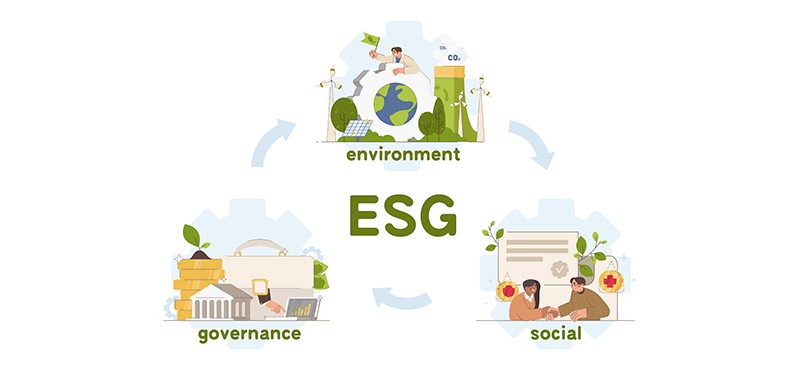
ESG stands for Environmental, Social, and Governance. It's a framework used by investors, companies, and regulators to assess the impact of an organisation on the world and to evaluate its sustainability and ethical practices. Each component of ESG focuses on a different aspect of a company's operations and policies:
Environmental
This aspect considers how a company performs as a steward of the natural environment. It includes issues such as a company's energy use, waste management, pollution, treatment of animals, conservation of natural resources, and compliance with government environmental regulations. Companies are assessed on their impact on air, water, and land and their efforts in dealing with climate change, including initiatives for reducing greenhouse gas emissions.
Social
This element examines how a company manages relationships with its employees, suppliers, customers, and the communities where it operates. Key issues in this category include labour standards, employee health and safety, diversity and inclusion, human rights, customer satisfaction, data protection and privacy, and community engagement. It's about assessing how a company treats people and whether its practices are sustainable and ethical.
Governance
This refers to a company's internal practices and policies guiding its overall direction, ethics, risk management, and stakeholder interactions. Key governance issues include executive pay, audits, internal controls, shareholder rights, and transparency. Governance is critical as it reflects the company's leadership, executive pay, audits, board diversity, and corporate ethics.
ESG criteria help investors and other stakeholders evaluate companies in which they might want to invest, not just based on financial performance but also on their ethical and sustainable impact. It's a way to encourage companies to act responsibly and to identify potential risks associated with unsustainable practices.
In recent years, ESG criteria have gained significant importance among investors and consumers, driven by a growing recognition that sustainable and socially responsible practices can lead to long-term business success and positive societal impact. Many companies now include ESG reporting as part of their annual reports to demonstrate their commitment to these values.
Why Are ESG Materiality Assessments Important for Businesses?
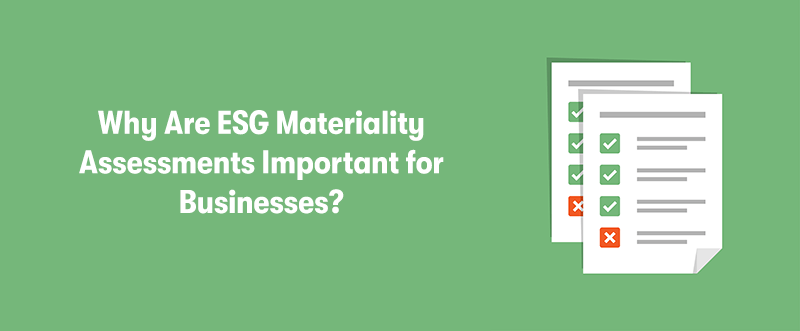
ESG (Environmental, Social, and Governance) Materiality Assessments are increasingly important for businesses for several reasons:
Risk Management
ESG Materiality Assessments help businesses identify and understand the potential environmental, social, and governance risks that could impact their operations, reputation, and financial performance. By recognising these risks early, companies can develop strategies to mitigate or manage them effectively.
Investor Attraction and Confidence
Investors are increasingly considering ESG factors as part of their investment decisions. Businesses that demonstrate a strong commitment to ESG issues are often more attractive to investors. ESG Materiality Assessments provide investors with the necessary data and insights to gauge the company's sustainability and ethical practices.
Regulatory Compliance
With the growing focus on sustainability, governments and regulatory bodies are implementing stricter regulations related to environmental and social issues. An ESG Materiality Assessment helps businesses stay ahead of these regulations and ensure compliance, reducing the risk of penalties or legal issues.
Market Positioning and Competitive Advantage
Companies that effectively manage their ESG issues often enjoy a better market position and a competitive advantage. Consumers and clients increasingly prefer businesses that are socially responsible and environmentally sustainable.
Operational Improvements and Efficiency
Through ESG Materiality Assessments, companies can identify opportunities for operational improvements, such as energy efficiency or waste reduction, which can lead to cost savings and improved productivity.
Stakeholder Engagement and Reputation Management
These assessments involve engaging with various stakeholders, which can strengthen relationships and improve the company's reputation. Understanding and addressing the concerns of stakeholders such as customers, employees, and the local community can enhance a company's public image and brand value.
Long-Term Sustainability and Viability
Businesses can ensure long-term sustainability and viability by focusing on material ESG issues. Companies that ignore these aspects may face long-term risks that could threaten their business model in the future.
Innovation and Opportunity Identification
ESG Materiality Assessments can also highlight areas for innovation and new business opportunities, such as developing sustainable products or entering new markets with high ESG standards.
Transparency and Reporting
These assessments provide the necessary framework for transparent ESG reporting, which is vital for maintaining trust and credibility among stakeholders.
In summary, ESG Materiality Assessments are crucial for businesses navigating an increasingly complex and sustainability-focused world. They provide a structured approach to identifying and managing ESG risks and opportunities, which is essential for long-term success and resilience.
What is Included in a Materiality Assessment for ESG?
A Materiality Assessment for ESG (Environmental, Social, and Governance) typically includes several key steps and components to identify and prioritise the ESG issues that are most significant to a business and its stakeholders. Here's what is usually involved:
Identification of ESG Issues
The first step involves compiling a comprehensive list of ESG issues that could potentially affect the organisation or be of importance to its stakeholders. This list may include a wide range of topics under each ESG category:
- Environmental: Climate change, energy use, waste management, water scarcity, biodiversity, pollution, etc.
- Social: Employee health and safety, labour standards, diversity and inclusion, community relations, customer satisfaction, human rights, etc.
- Governance: Corporate ethics, board composition, executive compensation, shareholder rights, transparency, anti-corruption practices, etc.
Stakeholder Identification and Engagement
Identifying key stakeholders such as employees, customers, investors, suppliers, local communities, and regulators. Engaging with these stakeholders to understand their concerns and priorities regarding ESG issues. This can be done through surveys, interviews, focus groups, or public consultations.
Data Collection and Analysis
Gathering data relevant to the identified ESG issues. This might involve internal audits, reviews of company policies and practices, industry benchmarks, and external research.
Prioritisation of Issues
Assessing the relative importance of each ESG issue to the organisation and its stakeholders. This involves considering the impact of each issue on the business (e.g., financial, legal, reputational) and the level of stakeholder concern. Techniques like materiality matrices are often used, where issues are plotted on a grid to determine their significance.
Integration with Business Strategy
Aligning the findings of the materiality assessment with the company's overall business strategy. This step ensures that the management of material ESG issues is integrated into the company's operational and strategic decision-making processes.
Reporting and Disclosure
Using the outcomes of the materiality assessment to inform the organisation's sustainability reporting. Companies often report on their material ESG issues in accordance with standards like the Global Reporting Initiative (GRI), the Sustainability Accounting Standards Board (SASB), or the Task Force on Climate-related Financial Disclosures (TCFD).
Review and Update
ESG priorities can change over time due to evolving business, environmental, social, and regulatory landscapes. Therefore, it is important for companies to regularly review and update their materiality assessments.
Action Plan and Implementation
Developing an action plan to address the material ESG issues identified. This includes setting goals, assigning responsibilities, and allocating resources.
Monitoring and Review
Establishing mechanisms to monitor progress against ESG objectives and reviewing the effectiveness of strategies and initiatives.
A Materiality Assessment for ESG is a dynamic process that requires continuous attention and adjustment. It is crucial for businesses to stay attuned to the changing landscape of ESG issues and stakeholder expectations to remain relevant and competitive.
How is a Materiality Assessment for ESG Conducted?
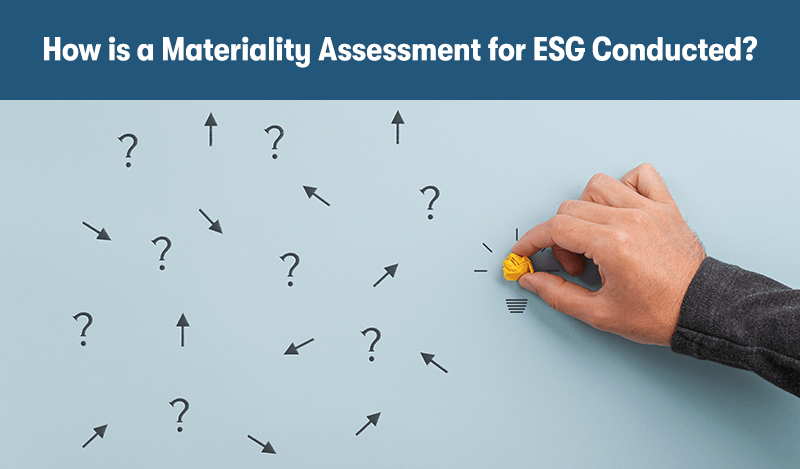
Conducting a Materiality Assessment for Environmental, Social, and Governance (ESG) involves several key steps. This process helps organisations identify and prioritise ESG issues that are most significant to their business and stakeholders. Here's how it is typically conducted:
Define the Scope and Objectives
The first step is to define the scope of the assessment clearly. This includes determining the time frame, geographical boundaries, and business units to be covered. The objectives of the assessment should also be outlined, such as whether it's for internal strategy development, external reporting, compliance purposes, or a combination of these.
Identify ESG Issues
Compile a comprehensive list of potential ESG issues that could impact the organisation. This list can be developed by reviewing industry standards, peer benchmarks, regulatory requirements, and global sustainability frameworks such as the Sustainable Development Goals (SDGs).
Stakeholder Identification and Engagement
Identify key internal and external stakeholders. These might include employees, customers, suppliers, investors, regulators, NGOs, and local communities. Engage with these stakeholders through surveys, interviews, workshops, or public consultations to understand their perspectives and concerns about various ESG issues.
Data Collection and Analysis
Gather quantitative and qualitative data related to the identified ESG issues. This could include internal records, sustainability reports, market research, and benchmarking studies. Analyse this data to assess the current performance and impact of the organisation on these issues.
Prioritise Material Issues
Evaluate the significance of each ESG issue to the organisation and its stakeholders. This is typically done through a materiality matrix, where issues are plotted based on their importance to stakeholders and impact on the business. The most material issues are those that are of high concern to stakeholders and have a significant impact on the organisation.
Validate the Results
The preliminary results of the materiality assessment should be reviewed and validated. This could involve feedback sessions with stakeholders or consultation with senior management and subject matter experts.
Integrate Findings into Strategy
The findings from the materiality assessment should be integrated into the organisation's strategic planning and decision-making processes. This includes setting priorities, developing action plans, and allocating resources to manage the material ESG issues.
Report and Communicate
Communicate the results of the materiality assessment to relevant stakeholders. This could be through sustainability reports, company websites, investor briefings, or internal communications.
Monitor and Review
Establish a process for regularly monitoring progress on the material issues and reviewing the materiality assessment. This is important as the external environment and stakeholder expectations can change over time.
Continuous Improvement
Use the insights gained from the materiality assessment to drive continuous improvement in ESG performance.
A Materiality Assessment for ESG is a strategic tool that helps organisations align their sustainability efforts with stakeholder expectations and business objectives. It is a comprehensive process that requires thoughtful planning, stakeholder engagement, and ongoing review to be effective.
What Are Stakeholders for Materiality Assessments?
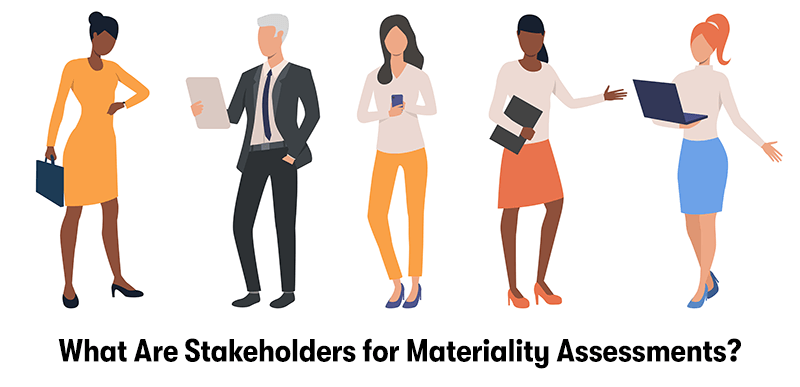
In the context of ESG (Environmental, Social, and Governance) Materiality Assessments, stakeholders refer to the various groups or individuals who have an interest in or are impacted by the activities and decisions of a business. Identifying and understanding these stakeholders is crucial for conducting a practical materiality assessment. The main categories of stakeholders typically include:
Employees
Employees are central stakeholders as they are directly affected by the company's practices in labour standards, health and safety, diversity and inclusion, and employee engagement.
Customers
Customers are key to any business and are increasingly interested in the sustainability and ethical practices of the companies from which they buy goods or services.
Investors and Shareholders
This group includes current and potential investors and shareholders interested in the long-term value and sustainability of their investments. They are increasingly considering ESG factors in their investment decisions.
Suppliers and Business Partners
Suppliers and business partners are important as they are part of the company's value chain. Their practices can directly impact the company's ESG performance.
Local Communities
These are the people and groups living in the vicinity of the company's operations. They are impacted by the company's activities, particularly in environmental and social aspects.
Regulators and Government Entities
Regulatory bodies are crucial stakeholders as they set the legal framework companies must operate within. Compliance with environmental laws, labour standards, and governance regulations is essential.
Non-Governmental Organisations (NGOs) and Advocacy Groups
NGOs and advocacy groups can influence public opinion and company policies concerning the environment, social justice, and human rights.
Industry Groups and Peers
Other companies and industry groups can influence and drive standards and expectations within the sector.
Media
The media plays a significant role in shaping public perception and can impact a company's reputation.
Academia and Experts
Researchers and academic institutions can provide valuable insights into ESG issues and trends.
Credit Rating Agencies and Analysts
These stakeholders assess the financial health and risk profile of companies, including ESG factors.
Each stakeholder group can have different concerns and priorities regarding ESG issues. A comprehensive materiality assessment requires engaging with a broad spectrum of stakeholders to gain a holistic understanding of the ESG issues that are most material to the business and its stakeholders. This engagement helps businesses align their strategies with stakeholder expectations, manage risks effectively, and capitalise on sustainability and social responsibility opportunities.
What Are Investors for Materiality Assessments?

In the context of ESG (Environmental, Social, and Governance) Materiality Assessments, investors are a key stakeholder group whose interests and perspectives are critically important. Investors in this context can include:
Institutional Investors
Organisations like pension funds, insurance companies, mutual funds, and investment banks manage large pools of money and invest in various assets, including stocks, bonds, and real estate. Institutional investors often have significant influence and a vested interest in the long-term performance and sustainability of their investments.
Retail Investors
Individual investors who buy and sell securities for their personal accounts. With the growing interest in sustainable investing, retail investors are increasingly considering ESG factors in their investment decisions.
Impact Investors
Investors specifically focused on generating social and environmental impact alongside a financial return. Impact investors pay close attention to a company's performance on material ESG issues.
Socially Responsible Investors (SRI)
These investors actively eliminate or select investments according to specific ethical guidelines. Their investment decisions are typically based on a combination of financial and ESG criteria.
Shareholders
Current shareholders of a company, both large and small, have a direct interest in how ESG issues are managed, as these can affect the company's profitability, risk profile, and long-term sustainability.
Venture Capitalists and Private Equity Investors
These investors often provide capital to startups and private companies with a potential for growth. ESG considerations can be crucial for them, especially when investing in sectors where sustainability is key.
ESG-focused Funds and ETFs
These are funds specifically created to invest in companies with strong ESG practices. They use ESG criteria to screen potential investments.
Credit Rating Agencies
While not investors in the traditional sense, credit rating agencies assess the creditworthiness of organisations. Their assessments increasingly include ESG factors, which can influence investor decisions.
For these investors, ESG Materiality Assessments provide valuable insights into how well a company understands and manages the risks and opportunities related to ESG issues. These assessments help investors determine their investments' sustainability and ethical impact, which are increasingly seen as indicators of long-term financial performance and resilience. Investors use the information from ESG Materiality Assessments to:
- Assess potential risks and opportunities that might not be apparent from financial analysis alone.
- Evaluate the company's long-term prospects and sustainability.
- Make informed decisions about allocating their investments.
- Engage with companies on ESG issues and advocate for improvements.
Thus, for businesses, effectively communicating their ESG performance and strategies through materiality assessments and other reporting can be key to attracting and retaining investment from these diverse investor groups.
What is a Materiality Matrix?
A Materiality Matrix is a tool commonly used in the field of corporate sustainability, particularly in the context of Environmental, Social, and Governance (ESG) reporting. It is a visual representation that helps organisations identify and prioritise the sustainability issues that are most significant to their business and stakeholders. The matrix is essential for conducting a materiality assessment, a key step in developing a robust ESG strategy. Here's how a Materiality Matrix is typically structured and used:
Two-Dimensional Grid
The matrix is usually presented as a two-dimensional grid. One axis (often the horizontal axis) represents the importance of various issues to stakeholders, and the other axis (usually the vertical axis) shows the impact of these issues on the business.
Identification of Issues
The first step in creating a matrix is to identify a range of potential ESG issues that the organisation faces or could face in the future. These issues can span across environmental, social, and governance aspects.
Stakeholder Engagement
Organisations engage with various stakeholders (such as customers, employees, investors, suppliers, and local communities) through surveys, interviews, workshops, or consultations to determine the importance of these issues to stakeholders.
Business Impact Assessment
Simultaneously, the organisation assesses the impact of each issue on its business. This involves considering factors like financial impact, legal compliance, operational efficiency, and reputation.
Plotting Issues on the Matrix
Each identified ESG issue is then plotted on the matrix based on its assessed importance to stakeholders and its impact on the business.
Prioritisation
The matrix helps in prioritising issues. Those that appear in the top right corner (high importance to stakeholders and high impact on the business) are usually considered the most material and thus require more attention and resources.
Strategic Planning and Decision Making
The insights gained from the materiality matrix are used to inform strategic planning, decision-making, and resource allocation. It helps organisations focus on the areas where they can make the most significant impact.
Reporting and Communication
The materiality matrix is often included in sustainability and annual reports to communicate how the organisation identifies and prioritises ESG issues to stakeholders.
Dynamic Tool
It's important to note that the materiality matrix is not static. As stakeholder expectations change and the business evolves, the materiality of different issues may shift. Regular updates to the matrix are necessary.
In summary, a Materiality Matrix is a strategic tool that enables organisations to visually identify and prioritise sustainability issues, ensuring that they address the most critical ESG aspects in their operations and reporting. This helps in better risk management, improved stakeholder engagement, and enhanced sustainability performance.
What is Digital Sustainability?
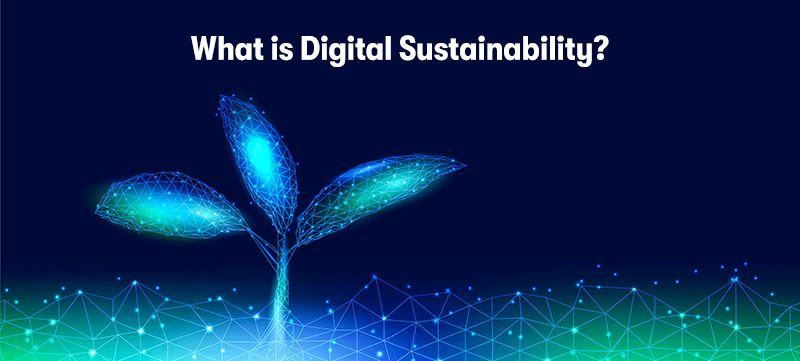
Digital sustainability refers to designing, implementing, and using digital technologies to support and enhance the long-term health and viability of the environment, economy, and society. It integrates sustainability principles into the digital domain, focusing on minimising negative impacts while maximising positive contributions to social and environmental well-being. Key aspects of digital sustainability include:
Energy Efficiency
One of the primary concerns in digital sustainability is the energy consumption of digital infrastructure, including data centres, network systems, and end-user devices. Energy-efficient technologies and renewable energy sources are increasingly being used to power these systems.
Resource Management
This involves designing and using digital technologies to minimise resource depletion. It includes the efficient use of materials in manufacturing devices, promoting longer product lifespans, and encouraging practices such as recycling and reusing electronic components.
Reducing Carbon Footprint
Digital technologies contribute to carbon emissions directly (through energy consumption) and indirectly (through manufacturing processes, transportation, etc.). Efforts in digital sustainability focus on reducing these emissions, often through the use of cleaner energy sources and more efficient technologies.
Sustainable Design and Production
Emphasising the development of digital products that are durable, repairable, and recyclable, thereby reducing electronic waste and the environmental impact associated with the production and disposal of electronic devices.
Social Inclusion and Accessibility
Ensuring that digital technologies are accessible and beneficial to all sections of society. This includes bridging the digital divide by providing access to technology in underserved areas and designing inclusive technologies that cater to diverse needs.
Data Privacy and Security
Responsible management of data is a crucial element of digital sustainability. This involves ensuring data privacy, security, and ethical use of data, recognising its importance in protecting individual rights and societal values.
Ethical and Responsible AI
As artificial intelligence becomes increasingly prevalent, ensuring that AI systems are developed and used responsibly and ethically is crucial. This includes addressing issues like bias in AI, transparency, and accountability.
Promoting Sustainable Behaviours
Digital technologies can be used to promote sustainability in other sectors, such as through smart grid technologies in energy, precision agriculture in food production, or telecommuting and virtual meetings to reduce transportation-related emissions.
Lifecycle Management
Considering the entire lifecycle of digital products, from design and manufacturing to use and end-of-life disposal, to minimise environmental impacts throughout.
Regulatory Compliance and Standards
Adhering to environmental regulations and standards and often going beyond compliance to set higher benchmarks for sustainability.
Digital sustainability is a growing field, recognising the profound impact of digital technologies on our world. It seeks to leverage these technologies to create a more sustainable future while addressing the challenges they pose to environmental and societal health.
Where Can You Learn More About Digital Sustainability?
At Purple Griffon, we offer an ITIL® 4 Specialist Sustainability in Digital & IT (SDIT) training course. This course will help you to:
- Understand how to use the ITIL guiding principles to deliver value by creating sustainable digitally enabled products and services.
- Effectively address VUCA challenges through sustainable strategies, procurement, products and practices.
- Obtain a practical grounding in the key principles of sustainability.
- Conduct a complete cost-benefit analysis identifying potential risks and opportunities using best practice guidance.
Final Notes on ESG Materiality Assessments
In conclusion, our exploration of ESG Materiality Assessments, their significance for businesses, and the critical role of stakeholders, particularly investors, underscores the evolving landscape of corporate sustainability. Through the use of tools like the Materiality Matrix, organisations can effectively prioritise their Environmental, Social, and Governance issues, aligning them with stakeholder interests and business strategy. Moreover, the concept of digital sustainability adds a new dimension, emphasising the need for integrating sustainable practices in the rapidly growing digital realm. As we've seen, sustainability is no longer a peripheral concern but a central strategy for modern businesses.
It's clear that understanding and implementing ESG principles is not just beneficial but essential for long-term success and resilience in today's world.


